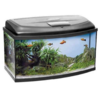MontePython
Arachnosquire
- Joined
- Feb 13, 2020
- Messages
- 96
Well, my S. servatius isn't here yet because the breeder is in the North and their weather was DIRE this week, so they'll hopefully be shipping out this coming week if the weather holds.Yes, you want to avoid any added fertilizer, chemicals, and manure of all sorts. The best kind will be strictly decomposed food and plant waste to my understanding.
S. servatius is truly a beautiful species. Hope to see pictures sometime!
Thanks,
Arthroverts
However, I did get my tank set back up with new substrate adapted from a blend of recipes (with various substitutes).
Still frustrated with my heating issue. I have a hard time getting it over 73 most of the time and I can't figure out why (also does anyone have any thermometer/hygrometer recs? I have a combo digital one with a separate probe for each measure, but I'm not 100% sure how accurate it is (though my old glass-and-mercury thermometer seems to agree so maybe it is)). I wonder if it's because the hood isn't glass?
I'm also having trouble wrt moisture - it's only been in there since Thursday, and I can't tell if it's still moist enough without really digging around. Like when I stick a finger in under the substrate it SEEMS damp, but then when I pull it out, it seems drier?
The tank has this kind of hood:

The vast majority of the back vents have been entirely blocked except for maybe 4 slats on each end, and those have been fitted with a pretty fine mesh (like in a sugar sifter), as has the places where there would have been equipment for filtering etc (there's mesh to keep millipedes in, and gorilla tape to keep things out).
However, the lid hardly has a vacuum seal, and there's a very small opening intended for cables (I use it for the thermometer and thermostat probes) so possibly there's some air flow that way? Likewise there might be some from the 'feeding door' at the top. Should I seal that little door up and maybe the still exposed slats? I've read (on petmillipede.weebly) that it's better to err on the side of too much ventilation than the side of too little, but I also don't want to lose too much heat and moisture. I'm sure it will improve somewhat in the spring and summer, but for now it's making me nervous (which may just be me being high strung because I'm new to this and hermit crabs made me hypervigilant).
On the upside, there are now predatory mites and at least one species of tiny springtails in my tank now too. I've taken some pictures of the new layout but I have to get them off my phone, so I'll post those later!
